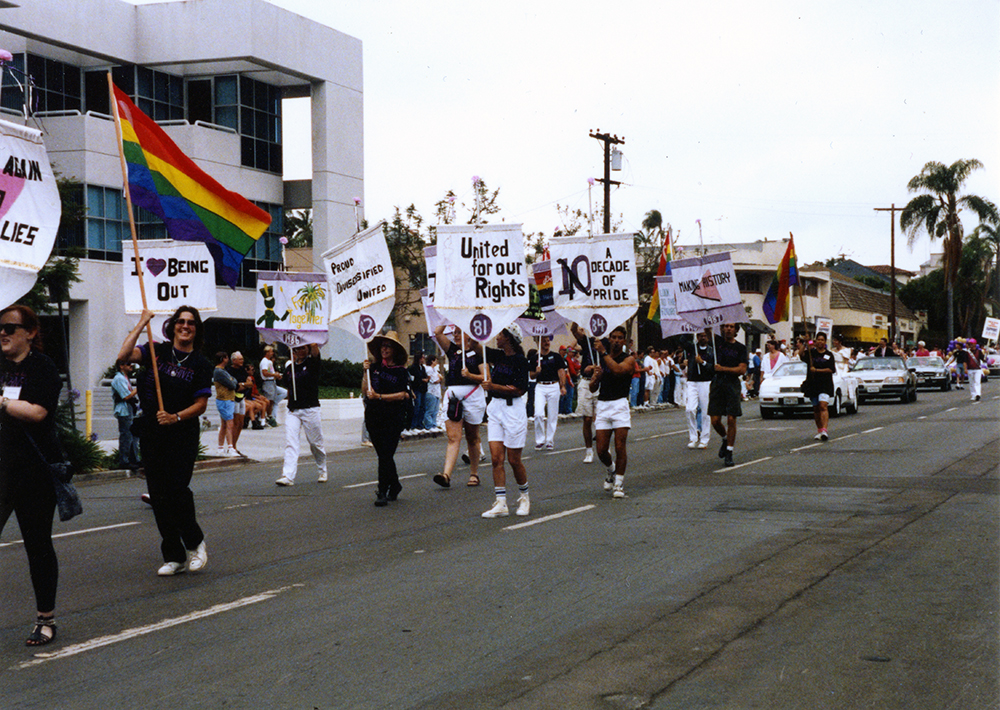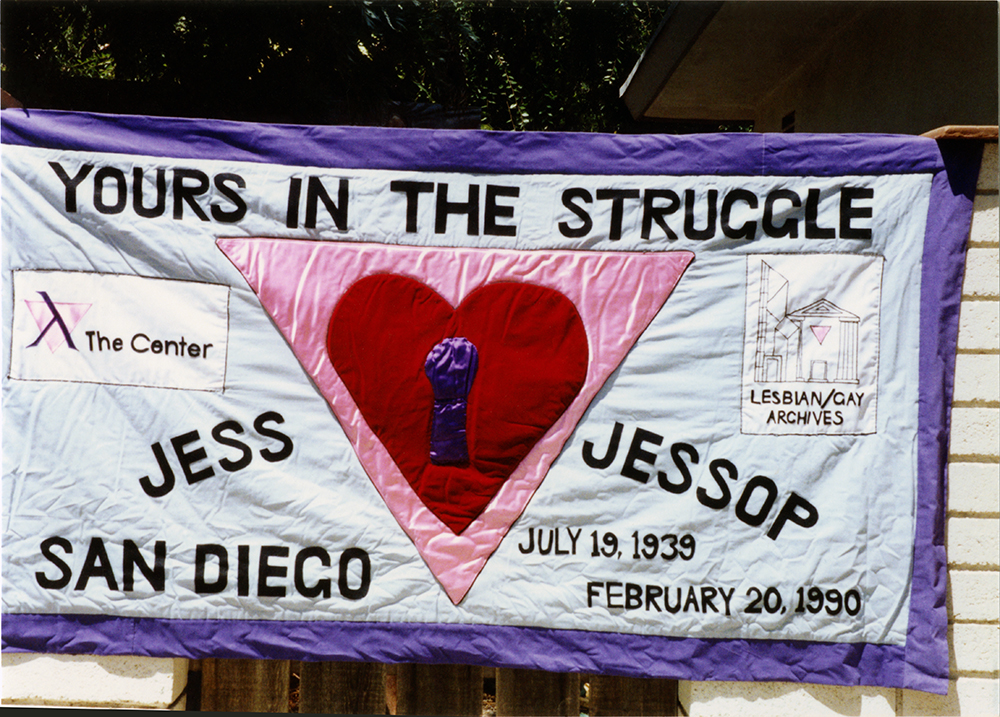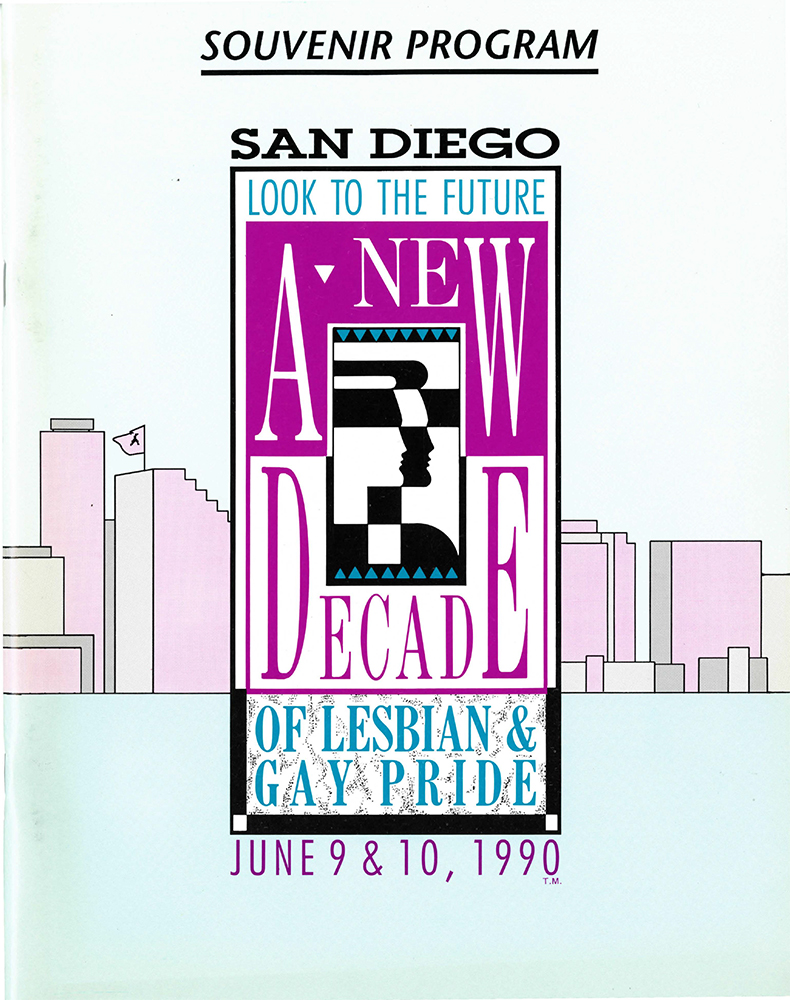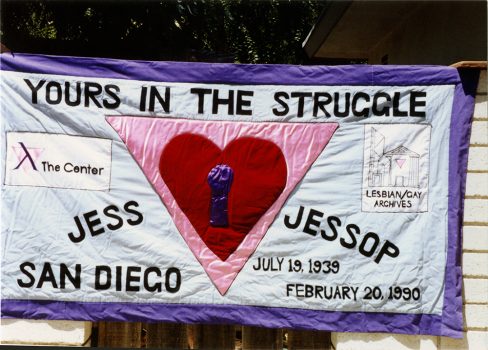
With the success of the previous year, the 1990 Lesbian and Gay Pride followed a similar structure. The weekend consisted of the Front Runners Pride Run, parade, rally, and a two-day festival. The theme “Look to the Future: A New Decade of Pride” was selected to emphasize the continued fight for equality moving forward. Indeed, 1990 was a progressive year for San Diego and its gay community. In May, San Diego City Council approved a Human Dignity Ordinance making it illegal to discriminate against people based on sexual orientation in the areas of housing, employment and lending. Chief of Police Bob Burgreen established an exclusive lesbian and gay community liaison position, appointing officer Matthew Weatherby. Additionally, the city awarded the Center for Social Services $600,000 for the purchase of a permanent facility located at 3916 Normal Street. In 1990, the community also suffered the loss of a beloved member: Jess Jessop passed away from an AIDS-related illness that February.

Pride weekend, which took place June 9-10, was a celebratory affair, although not without some complications. A stormy Saturday morning had organizers worried about the weekend’s turnout. San Diego Lesbian and Gay Men’s Pride (SDLGP) had invested a considerable amount of money into the weekend and were counting on festival attendance to balance their expenses. Board member Joe Mayer remembers joking that they would have to do bake sales to make up for the debt of this failed Pride. But, just an hour before the parade was scheduled to start, the rain let up and the sun came out. The parade began at Sixth Avenue and Laurel Street only a few minutes late and featured 80 contingents; 13,000 people made it out to watch the the salvaged procession. For the first time, newspapers reported no fundamentalist protesters. Although this could be attributed to the bad weather, the Fundies had been dying down for years. A new unit in the parade this year was Gay/Lesbian Asian-Pacific Islanders Social Support (GLASS), the first all-Asian contingent to march in a San Diego Pride parade.
Another first was that both Grand Marshals were black members of the gay community. Cynthia Lawrence-Wallace was a lesbian activist in San Diego for over two decades. She was a founding organizer of the Center, founder of the San Diego Democratic Club Women’s Caucus, organizer of the Blood Sisters, and founder and musical director of the San Diego Women’s Chorus. Fundi was a locally based artist, musician, and performer who founded an alternative school for African-American children in Southeast San Diego and was involved in Lesbians and Gays of African Descent (LAGADU). Lawrence-Wallace and Fundi spoke at the rally along with Sergeant Miriam Ben-Shalom, a lesbian military activist who was dishonorably discharged in 1976, and Perry Watkins, a gay servicemen who was denied discharge despite knowledge of his sexuality. Ben-Shalom and Watkins spoke on being in homosexual in the military, an issue that would be a continued cause of San Diego Pride in the following decades.

The stormy weather had wrecked the festival site at the Old Balboa Naval Hospital parking lot, but it was ultimately a success. Pride organizers frantically cleaned up the festival grounds and were luckily met with sunny afternoons. The event featured over 50 vendors, and for the first time, included workshops. One of the workshops – on hate crimes – was sponsored by the San Diego Police Department and led by Officer John Graham. Graham would come out to the local press in October, making him the first police officer in southern California to come out while still on active duty. There were also over a dozen performers, a Lesbian & Gay Archives exhibit, and film screenings. While the weekend was able to turn around in spite of the weather, SDLGP decide that moving forward, they would hold Pride in July; pushing the festivities out a month would ensure a greater chance of good weather and remove some pressure of competing with San Francisco and Los Angeles Pride events.
